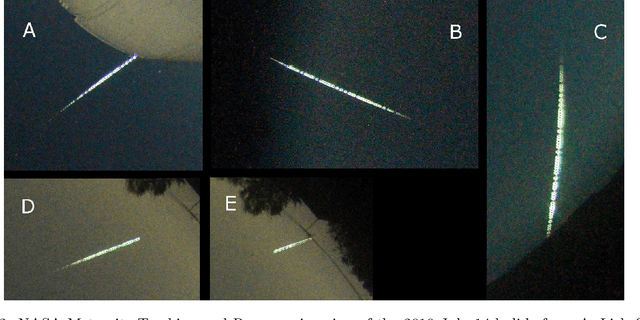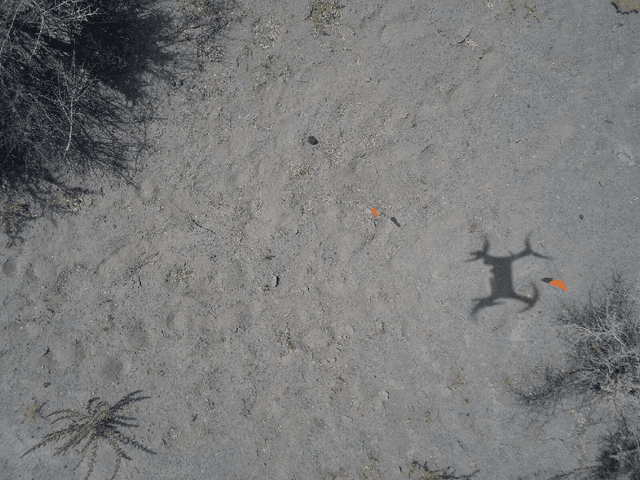Hadrien Devillepoix
Recovery of Meteorites Using an Autonomous Drone and Machine Learning
Jun 11, 2021



Abstract:The recovery of freshly fallen meteorites from tracked and triangulated meteors is critical to determining their source asteroid families. However, locating meteorite fragments in strewn fields remains a challenge with very few meteorites being recovered from the meteors triangulated in past and ongoing meteor camera networks. We examined if locating meteorites can be automated using machine learning and an autonomous drone. Drones can be programmed to fly a grid search pattern and take systematic pictures of the ground over a large survey area. Those images can be analyzed using a machine learning classifier to identify meteorites in the field among many other features. Here, we describe a proof-of-concept meteorite classifier that deploys off-line a combination of different convolution neural networks to recognize meteorites from images taken by drones in the field. The system was implemented in a conceptual drone setup and tested in the suspected strewn field of a recent meteorite fall near Walker Lake, Nevada.
* 16 pages, 9 Figures
Machine Learning for Semi-Automated Meteorite Recovery
Sep 29, 2020


Abstract:We present a novel methodology for recovering meteorite falls observed and constrained by fireball networks, using drones and machine learning algorithms. This approach uses images of the local terrain for a given fall site to train an artificial neural network, designed to detect meteorite candidates. We have field tested our methodology to show a meteorite detection rate between 75-97%, while also providing an efficient mechanism to eliminate false-positives. Our tests at a number of locations within Western Australia also showcase the ability for this training scheme to generalize a model to learn localized terrain features. Our model-training approach was also able to correctly identify 3 meteorites in their native fall sites, that were found using traditional searching techniques. Our methodology will be used to recover meteorite falls in a wide range of locations within globe-spanning fireball networks.
 Add to Chrome
Add to Chrome Add to Firefox
Add to Firefox Add to Edge
Add to Edge